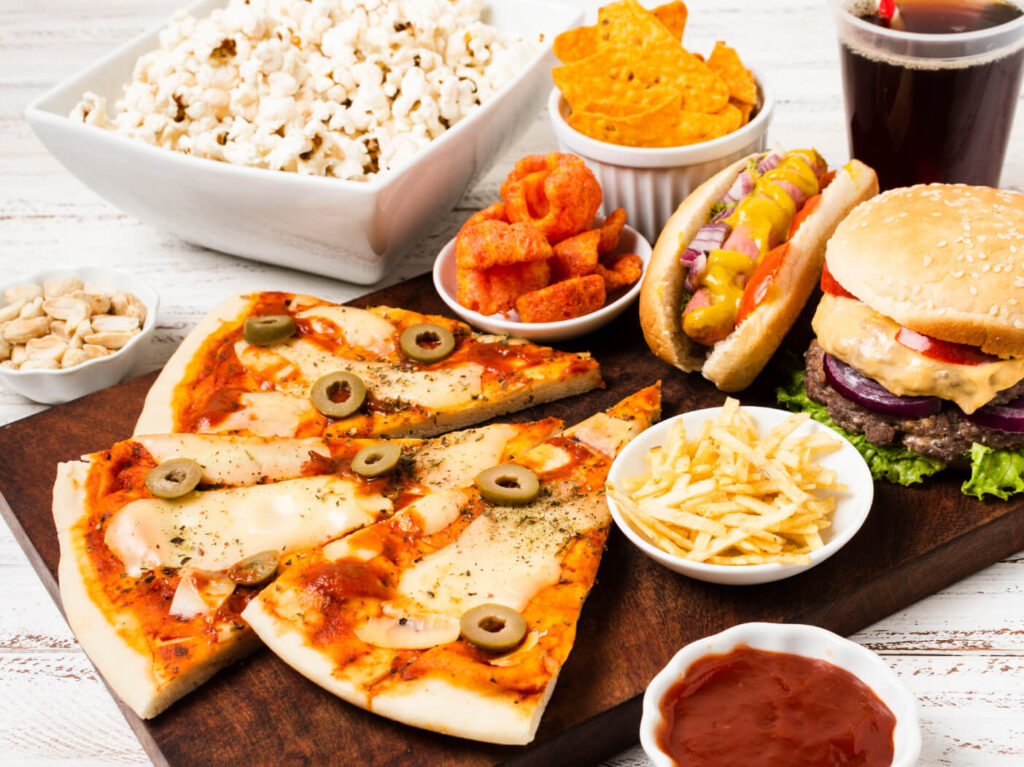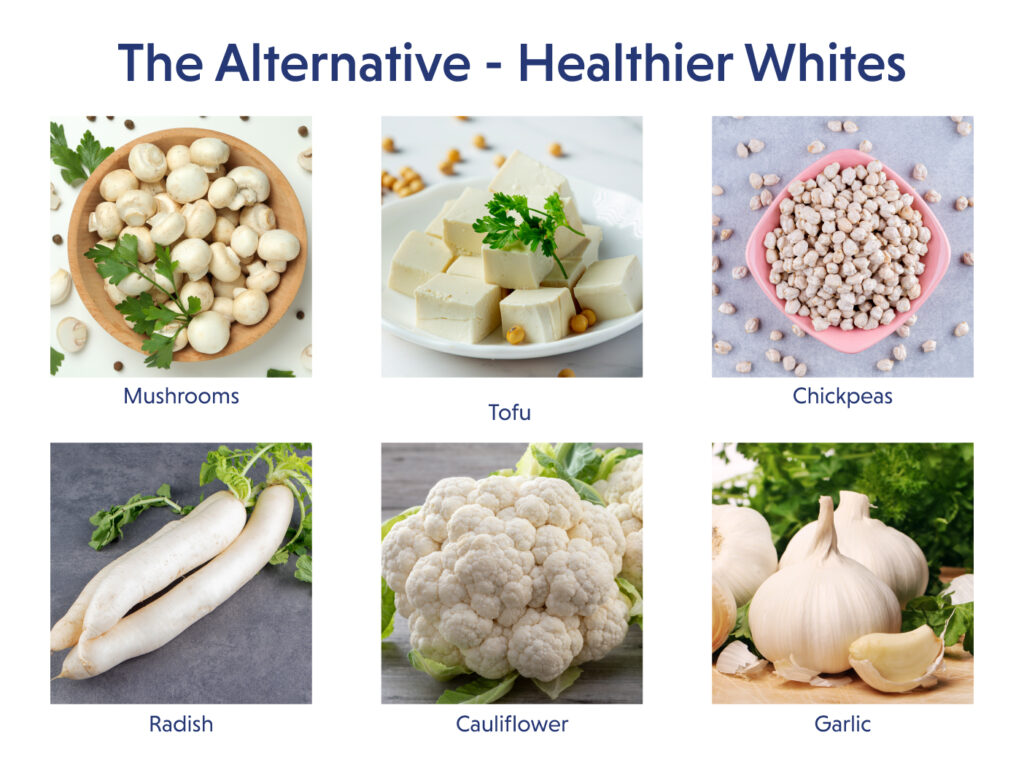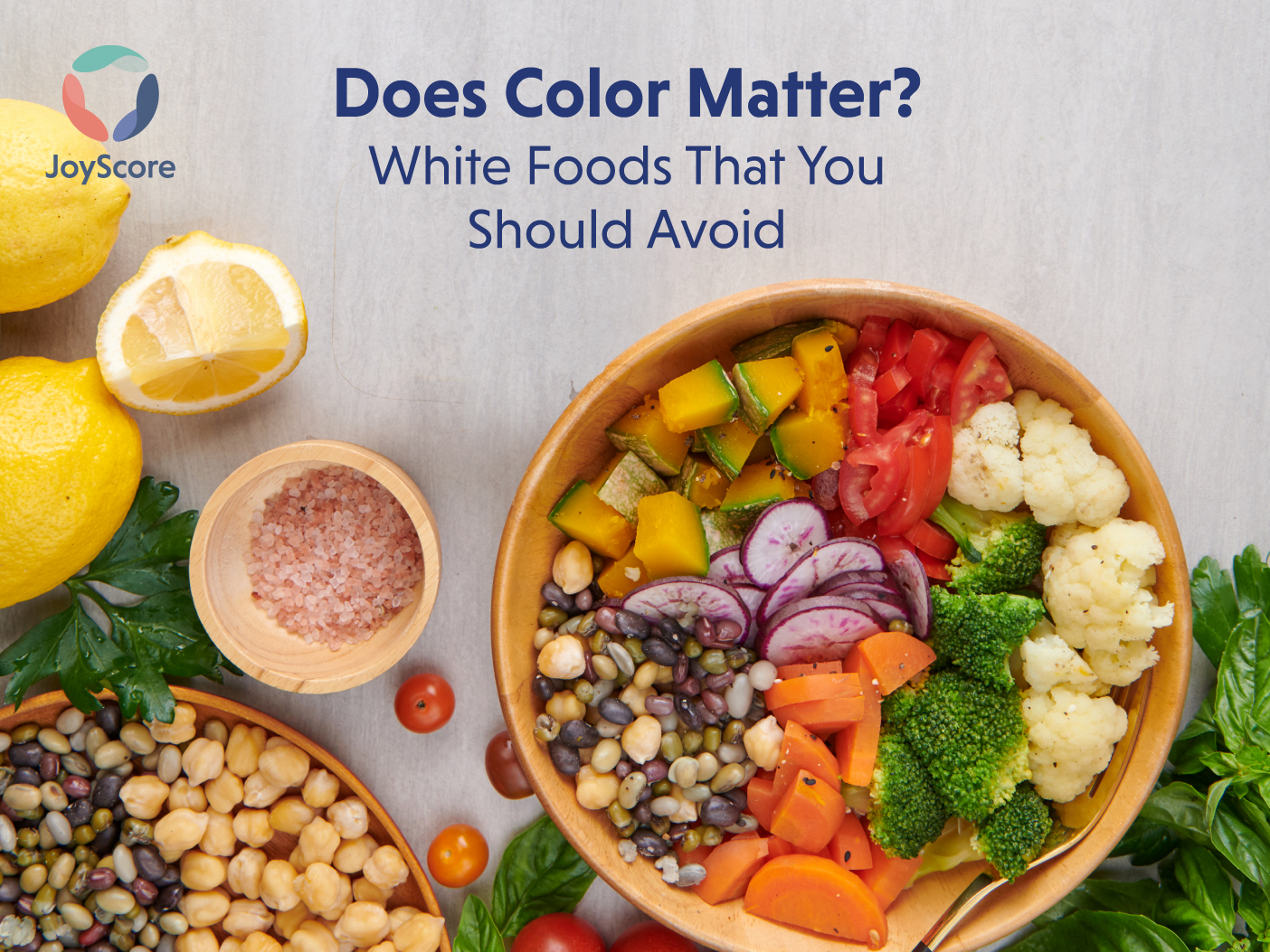Avoid eating anything white! I am sure you must have heard this from many people around you as the culprit (white foods) has been found responsible for the risk of obesity and many chronic diseases such as type 2 diabetes. But does that mean you should just bypass every white food the next time you visit a grocery store?
Read on to know more….
To understand precisely which white foods should be avoided, it is important to first understand the concept of processed and unprocessed foods.
What are white foods?

Processed foods refer to foods that have been refined/ processed in an industry. Refining leads to stripping the food off its nutrients. It also leads to the removal of all the fiber. Some common examples include white foods such as white rice, flour, white bread, pasta, crackers, cereals, high-fructose corn syrup, and refined white sugar.
One can go overboard while binging on foods like white flour pasta, cakes, cookies, muffins, etc. Not to forget the over-sweetened drinks and beverages loved by children and adults alike.
The downside of white foods
White foods should be taken in moderation if one cannot avoid them altogether.
When consuming foods high in simple sugars, such as cakes, pastries, cookies, etc., one can experience a sugar crash.
It means that when the body consumes foods high in sugar, the sugar levels in the body shoot up and then come crashing down. Production of more insulin to keep the sugar levels consistent leads to a drop in the energy levels and hence a sugar crash. This further can give way to more hunger pangs, irritability, anxiety, fatigue, headaches, dizziness, and extreme sweating.
How to fix the crashes
- Consuming a balanced diet is the key to consistent sugar levels in the body. A meal with adequate amounts of proteins, fats, fiber, and carbohydrates can protect a person from a sudden sugar crash and its after-effects.
- Avoid eating simple sugars alone and combine them with other nutrient-dense foods.
- Chalk out a meal plan ahead of time; that way, you will tend to have a well-balanced diet by including different types of nutrients. For example, you can prepare a weekly food chart, include nutrient-rich foods, and eat according to it every day.
- Have small, frequent meals rather than one big meal.
- Limit consumption of desserts and other calorie-dense foods to about two times per week.
- Chocolate cravings can be met by switching to a healthier version such as dark chocolate (with 70% or more cacao) which, being loaded with antioxidants, is also nutritious.
The replacement-Healthy Carbs
Carbohydrates are nutrients that hold an important place in a plate serving a balanced diet. Healthy carbs are required alongside proteins and fats to keep one in good health. So what exactly are these healthy carbs?
Carbs serve as a fuel for providing energy to our body, and the extra ones get stored as fat for later use in the body. Dietary carbohydrates include starches, sugars, and fiber.
But these carbohydrates also have types: ‘simple vs. complex’ or ‘whole vs. refined.’
Complex/ whole carbohydrates are not processed and are in their natural form, but, as mentioned earlier, refined ones are processed.
Complex/whole carbs are much healthier than refined carbs as they are more nutritious and contain fiber. Examples of some complex carbohydrates are- fruits, vegetables, quinoa, potatoes, barley, legumes, beans, oats, and whole grains. However, simple carbs include white sugar, high fructose corn syrup, packaged fruit juices, soda, baked goods, and packaged breakfast cereal.
Avoiding White food for weight loss
With the ever-increasing diet plans available today, the No-White foods diet is also another diet that has been added to the list. Elimination of the characteristic high starch and sugary foods, the No-white diet can help you shed some pounds.
What to include
Eating a minimum of white foods such as egg whites, milk, and dairy products.
Including colorful, nutritious vegetables rather than potatoes and white beans. Whole grains and fruits should also be eaten while limiting the amount of fats such as cheese and butter. However, lean meats such as chicken can be eaten.
Highly processed foods having high sugar and trans fats should be avoided as they lead to weight gain and several health problems. Lentils and black beans can serve as excellent protein and fiber sources that will keep your tummy full for a long time.
On the other hand, the sugar crash after consuming a refined, white food diet will add to your weight gain problems as it will leave you hungry even after having a meal. This will lead you to eat again and gain weight in the long run.
Labels don’t lie

It becomes essential to read labels when buying your daily groceries. Avoid anything made with white flour and high-fructose corn syrup, such as commercially prepared baked foods, bagels, pizza, cookies, crackers, etc. Instead, try to get your nutrition from good carbs.
The alternative- Healthier Whites

Not all whites are bad for health. Consider a list of healthier white food choices you can make to replace the unhealthy ones: These have umpteen benefits ranging from being anti-inflammatory to protecting your heart health:
Onions and garlic- Besides spicing up any food and making it flavorful, these come with immense health benefits. Strengthening our immune system, lowering blood pressure and cholesterol levels, and serving as an important source of antioxidants.
Turnips- Loaded with Vitamin C, turnips can help maintain a healthy heart, eyes, and bones and also help to lower blood pressure.
Cauliflower- A superfood, cauliflower is an essential source of vitamins C, B, K, calcium, folate, magnesium, and manganese. It is also loaded with nutrients which can protect against cancers.
Mushrooms- They come with many health benefits as they are a rich source of vitamin D, fiber, protein, potassium, selenium, and riboflavin. Apart from being low in fats and sodium, they help reduce inflammation and protect against heart diseases.
Chickpeas- Packed with proteins, fiber, and minerals like folate, iron, magnesium, and potassium. Besides this, chickpeas help in weight control, prevent sugar crashes, reduce cholesterol levels and also help in increased nutrient absorption.
Radish- An excellent source of minerals and fiber, vitamin C, and folate. It is beneficial in lowering blood pressure and protects against heart disease.
Tofu- The whitest of all, is made of soybeans and loaded with calcium, iron, and protein. Some health benefits include improving the immune system and heart health, maintaining blood pressure, and preventing hair loss.
To summarizeSo, White or no white- Follow a simple rule-’eat good, and you will feel good. For more information on healthy foods and a healthy lifestyle, download the JoyScore App and live a healthier, fulfilling life!
Download the Joyscore app Now!
Download on the Appstore
Get it on Google Play



